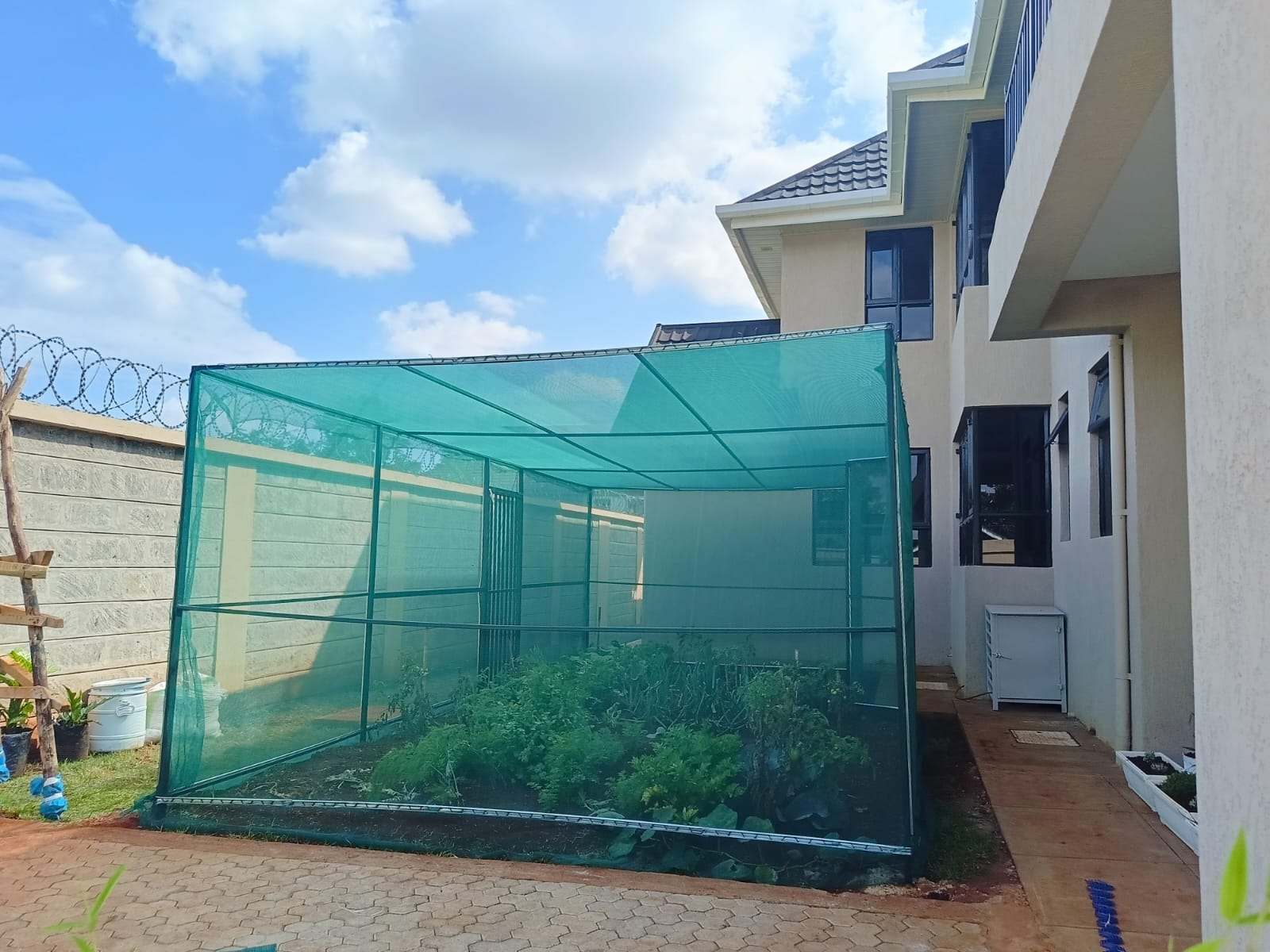Table of Contents
Shade net materials are the most widely used protective nets for crop shields against environmental conditions. Growing plants under shade nets helps cut down evaporation and stress plant development. It also limits the high harsh effect of sunlight on soil moisture as it directly filters the amount of the sun rays penetrating.
 Understanding the distinct features of each type helps in choosing the right net for specific agricultural ventures, thereby optimizing crop protection and growth
Understanding the distinct features of each type helps in choosing the right net for specific agricultural ventures, thereby optimizing crop protection and growth
Know the Cost of Shade Net Materials
Our shade nets vary in price for the individual sunlight filtration percentages. We have different percentages of filtration; 35%, 55%, 75% and 90% all sold in full rolls of 4 x 50 m.- 35% – Cost KES 16,000
- 55% – Costs KES 19,000
- 75% – Costs KES 26,000
- 90% – Costs KES 36,000
Types of Shade Net Materials and Recommended Uses
Shade nets are available in knitted or woven forms to serve a wide range of crop types and applications. Knitted Nets: These are highly versatile, providing uniform shade and air circulation, ideal for vegetable cultivation and floriculture- 30 % shade net – reduces the sun penetration rate by 35 percent
- 55 % Knitted Shade net – Reduces the sun penetration by 55 percent.
- 75 % Knitted Shade net – They lower the sun penetration rate by 75 percent.
- 90 % Knitted Shade net – Shade net types reduce the sunlight level by 90 percent.
Crops Grown under Knitted Shade nets
- 30 % – Vegetables such as Kunde, kales, spinach, carrots and broccoli.
- 55 and 75 % – Crops less tolerant to the sun such as seedlings, flowers, and carrots.
- 90 % – Shade-loving plants such as herbs; ferns, algae
 Understanding the distinct features of each type helps in choosing the right net for specific agricultural ventures, thereby optimizing crop protection and growth
Understanding the distinct features of each type helps in choosing the right net for specific agricultural ventures, thereby optimizing crop protection and growth
How to Select Best Shade Nets for Robust Farming
In the process of finding the best shade net materials for your shade house farming, start by looking for the ideal and reputable supplier. We are one of the best shade net suppliers in Kenya with quality and affordable nets. The most important thing to consider is the percentage of sunlight filtration for proper crop suitability. Determine the quality and ability of a shade net to last long. It is recommended to choose UV-treated shade nets to ensure they can last long. The best of all concerns is the size of the net as per the shade structure you want to use on it.Durability of Shade Net Materials
Before you decide to invest in a shade net material, it’s important to learn how long it can last while operating in good condition. A good shade net can last for 5-10 years but it depends on the factors such as;- Quality of the Shade net material – the material of the shade net determines its durability. Durable nets are made from UV-treated polythene materials.
- Environmental conditions – Where a shade is used can also determine its longevity. Some areas have extremely harsh hot climates which can lower the effectiveness of the material after some time.
- Maintenance of the net – The care and maintenance level determines how long a shade net will serve your agricultural purposes. Care involves keeping sharp objects that can tear the net away, preventing children and domestic animals from damaging the material.
- Application – the use of the shade net dictates the amount of time it can provide effective protection to your crops.
Application of Shade net Materials in Agriculture
- Greenhouses – Useful temperature control elements in a hot greenhouse environment. They are installed to cover the ventilation areas and ensure an optimal temperature.
- Nurseries – To provide cover for growing seedlings and young plants that are vulnerable to the harsh sunlight.
- Orchard fruit protection – alternatives for keeping birds away and sometimes protecting fruits from hail and frost damage.
- Fish farming – may work as protective nets in fishponds and dams. The role is to keep stones, debris and animals such as birds away.




